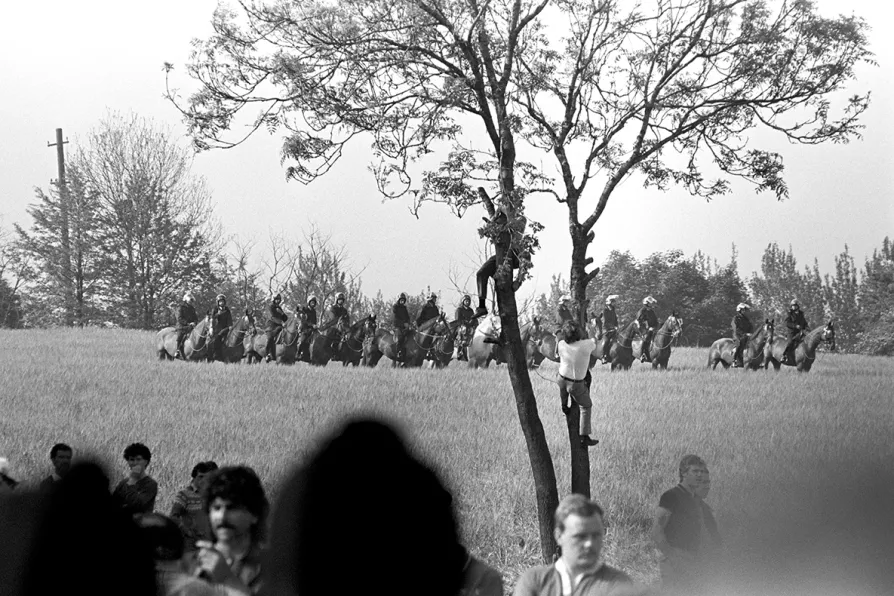Labour’s cynical recruitment drive normalises militarism, diverts attention from youth unemployment and public service cuts, and seeks to build consent for an increasingly aggressive defence agenda, argues GEORGINA ANDREWS

 Miners keep an eye on the mounted police, deployed in the cornfield behind the Orgreave coking plant, May 31, 1984
Miners keep an eye on the mounted police, deployed in the cornfield behind the Orgreave coking plant, May 31, 1984
I HAVE been to Orgreave on two occasions. I first went on June 18 1984. I was driven over by a friend who was doing his apprenticeship at Forgemasters. We arrived late in the morning. He dropped me off at the top of Orgreave Lane.
It was a fine, hot day. I walked down the lane with some strikers who had come down from Ayrshire Barony pit and we all anticipated that we would be involved in a Saltley Gate and shut down the coking plant at the bottom of the lane.
I headed down to the railway bridge. I stopped at the bridge on the narrow road. A mass of pickets blocked the way. I climbed up onto the bridge. Looking down towards the plant I could see the police in huge numbers behind long shields.

STEVEN ANDREW is moved beyond words by a historical account of mining in Britain made from the words of the miners themselves













